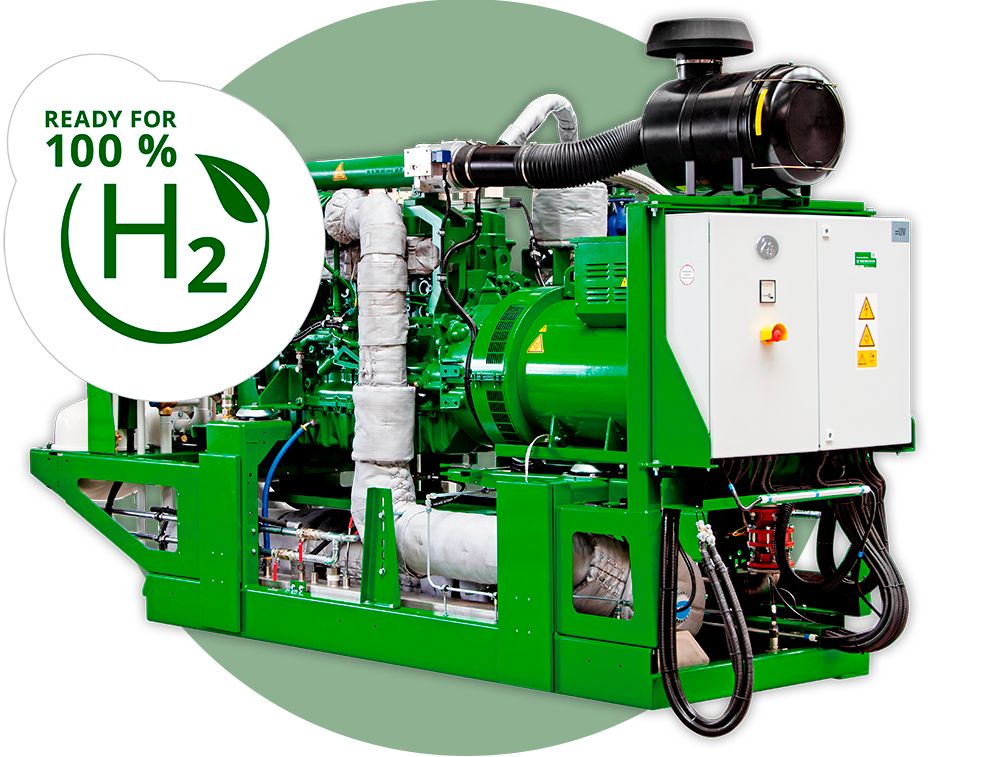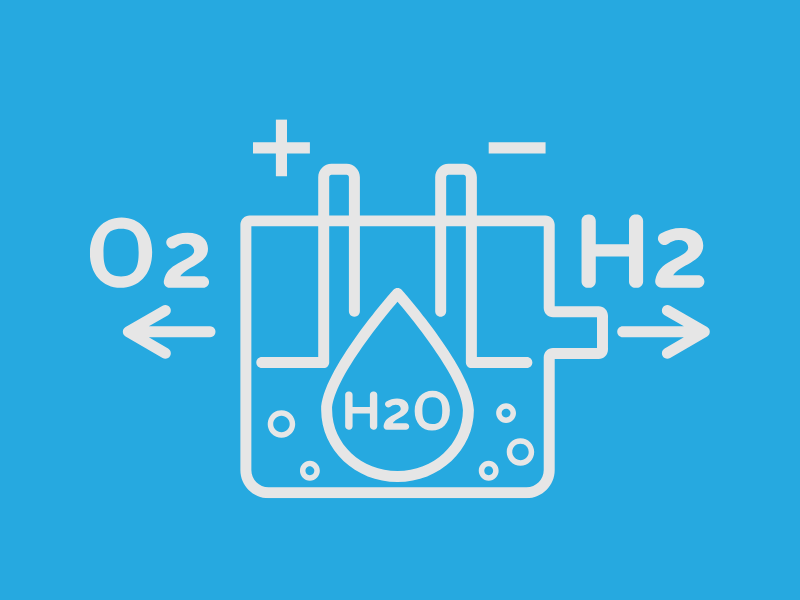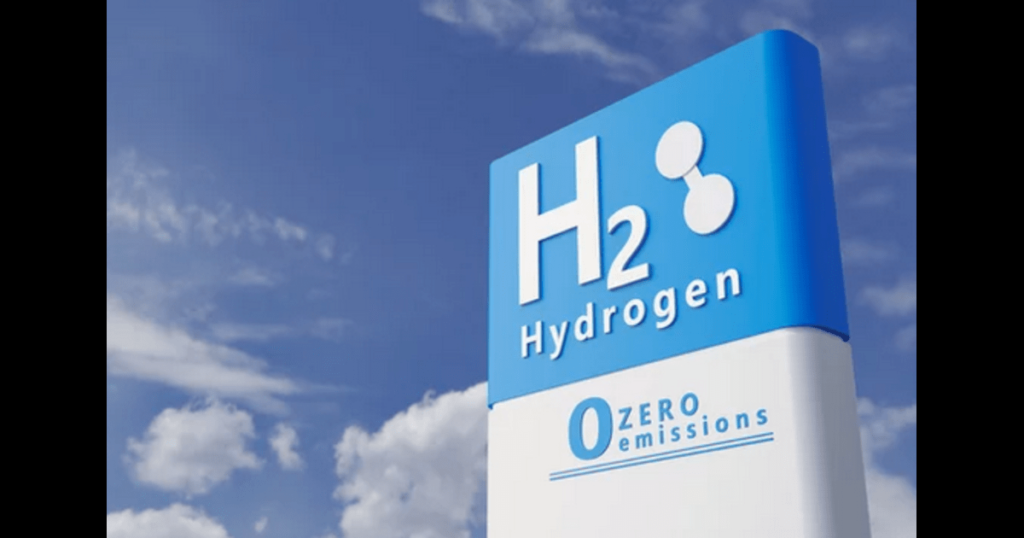This article is about decarbonising hospital steam. Now, why do we want to decarbonise hospital steam? Well, hospitals run on steam. Walk through the mechanical spaces of any major health facility and you’ll encounter a labyrinth of pipes, valves, and pressure vessels that form the circulatory system of modern healthcare. This steam powers autoclaves that sterilise surgical instruments at 121°C to 132°C. It heats the water for commercial laundry operations that process thousands of kilograms of linens daily. It even provides the thermal energy for humidification systems that maintain optimal conditions for patient recovery.
But here’s the challenge. These legacy steam systems were designed decades ago to burn natural gas or oil. As healthcare organisations worldwide commit to net-zero targets, the question becomes unavoidable: how do we decarbonise hospital steam without disrupting the critical services that depend on it?
The answer emerging across Europe and beyond involves hydrogen-powered combined heat and power systems. These H2-CHP installations can retrofit existing hospital infrastructure, delivering the high-temperature process heat required for sterilisation and laundry whilst cutting carbon emissions dramatically. The complexity lies not in the technology itself but in executing the transition without ever compromising patient safety or operational continuity.
Why Decarbonising Hospital Steam Systems Matter
Healthcare facilities account for roughly 5% of global CO₂ emissions. Within that footprint, steam generation represents one of the largest single contributors. The energy demands are staggering. A typical 500-bed hospital might require 5,000 kWh per day just for domestic hot water and heating, with substantial additional loads for sterilisation and laundry processes.
Steam for sterilisation must meet exacting specifications. Autoclaves require steam composed of 97% vapour and 3% moisture for efficient heat transfer. The temperature must reach at least 121°C at 15 pounds per square inch of pressure, maintained for minimum exposure periods that vary by load density and material composition. Superheated steam, with moisture content below 3%, becomes ineffective for sterilisation because it lacks the latent heat needed for microbial inactivation.
Laundry operations add another layer of demand. Commercial hospital laundries consume enormous quantities of hot water and steam for washing, drying, and pressing. These facilities process everything from surgical drapes to patient gowns, with strict infection control requirements that mandate high-temperature washing and thermal disinfection cycles.
The carbon footprint of these operations extends well beyond direct emissions. Steam distribution losses, condensate recovery inefficiencies, and the maintenance burden of aging infrastructure compound the environmental impact. In many hospitals, more than 60% of the overall carbon footprint traces back to the supply chain, including energy procurement.
The Hydrogen-CHP Solution for Process Heat
Hydrogen combined heat and power systems offer a pathway to decarbonise these critical loads. Unlike conventional boilers that simply burn fuel to generate steam, H2-CHP units use combustion engines or turbines to produce both electricity and thermal energy simultaneously. The waste heat from the engine drives heat exchangers that can supply steam, hot water, or both.

The efficiency gains are substantial. A traditional natural gas boiler might achieve 95% efficiency at best. An H2-CHP system can reach overall efficiency levels exceeding 80% when considering both electrical and thermal output. When integrated with high-coefficient-of-performance heat pumps, the thermal output can be amplified even further, with some configurations achieving effective thermal multiplication factors of 400% or more compared to direct combustion.
Partner organisations like 2G have pioneered 100% hydrogen-powered CHP units specifically designed for institutional applications. These systems can deliver 360 kW of electrical output alongside 372 kW of thermal energy, with the capability to generate steam at the temperatures required for autoclave sterilisation. The integration of absorption heat pumps allows the electrical output to be converted to additional low-temperature heat for applications like domestic hot water preheating or laundry process water.
The fuel itself comes from electrolysis of water using renewable electricity. When powered by offshore wind or solar generation, this green hydrogen production pathway achieves near-zero lifecycle greenhouse gas emissions. For island health systems like the Canary Islands, where grid electricity often comes from diesel generators or imported fossil fuels, the energy independence dimension becomes equally important.
Modern electrolysers can produce hydrogen at 99.999% purity with conversion efficiencies around 74%. The oxygen byproduct from electrolysis provides an additional benefit for hospital applications, as medical-grade oxygen is a critical supply requirement for patient care. This circular approach to resource utilisation exemplifies the systems thinking required for sustainable healthcare infrastructure.

Sterilisation Requirements and Hydrogen Compatibility
Retrofitting hospital steam systems for hydrogen begins with understanding the sterilisation workflow. Central sterile processing departments rely on multiple autoclave types, from small tabletop units to large floor-loading chambers. Each steriliser operates on the same fundamental principle: expose items to direct steam contact at specified temperature and pressure for sufficient duration to achieve complete microbial inactivation.
The steam quality parameters become critical. Hydrogen combustion can produce steam with the correct moisture content, but the delivery infrastructure must maintain those specifications throughout the distribution network. Superheated steam results from heat loss in poorly insulated piping or improper pressure reduction. Wet steam, conversely, occurs when condensate accumulates due to inadequate trap function or oversized piping.
Process steam for sterilisation also demands chemical purity. Minerals, dissolved solids, and contaminants in boiler feedwater can deposit on instrument surfaces during the sterilisation cycle, causing staining, corrosion, or interference with sterilisation efficacy. Many modern facilities use clean steam generators that produce steam from water-for-injection or reverse osmosis treated water, with stainless steel contact surfaces throughout.
Hydrogen-fired systems can accommodate these requirements, but the transition requires careful attention to combustion control and emissions. While hydrogen combustion produces no carbon dioxide, it can generate nitrogen oxides when burned at high temperatures in the presence of air. NOx emissions from hydrogen can reach levels up to six times higher than methane unless combustion systems incorporate specific mitigation strategies.
Advanced burner designs, exhaust gas recirculation, and selective catalytic reduction represent proven approaches to NOx control. Dry low-NOx combustion systems dilute the flame temperature through careful fuel-air mixing, preventing the thermal NOx formation pathway. Steam injection provides another option, though it parasitically consumes some of the steam output. For hospital applications, meeting clean air standards for NOx becomes non-negotiable given the proximity to patient care areas and vulnerable populations.
Laundry Process Heat and Hot Water Integration
Hospital laundries present different but equally demanding retrofit challenges. These facilities require hot water at various temperatures for different wash cycles, plus steam for flatwork ironers, towel dryers, and garment presses. The temperature stratification matters. Prewash cycles might use 40°C water, main wash cycles 70°C to 90°C, and thermal disinfection rinses approach 95°C.
An integrated H2-CHP and heat pump configuration can supply this entire temperature range efficiently. The CHP exhaust heat generates high-temperature steam for autoclaves and commercial ironers. The heat pump, driven by electricity from the CHP or renewable sources, lifts the temperature of lower-grade heat sources to produce the 40°C to 60°C hot water needed for most laundry processes. This cascading use of thermal energy extracts maximum value from the hydrogen fuel.
Buffer thermal storage becomes essential for matching variable heat production with intermittent demand. Large insulated tanks can store hot water or even phase-change materials that absorb latent heat during melting and release it during solidification. This temporal decoupling allows the H2-CHP to operate at steady state for maximum efficiency whilst accommodating the batch nature of sterilisation and laundry loads.
The condensate return system requires particular attention during retrofit. Steam systems rely on returning condensate to the boiler feedwater system to conserve water and thermal energy. When converting from traditional boilers to H2-CHP, the condensate chemistry must be validated to ensure compatibility with new heat exchanger materials. Stainless steel heat exchangers, increasingly common in hydrogen applications, tolerate a wider range of condensate quality than copper-brass components.
Distribution losses deserve scrutiny as well. Older steam networks may leak substantial thermal energy through uninsulated pipes, failed steam traps, or undersized condensate return lines. Some hospitals lose 20% or more of generated steam before it reaches end uses. A retrofit project presents the opportunity to overhaul the distribution network, replacing failed traps, upgrading insulation, and rightsizing piping for actual rather than historical loads.
Retrofit Strategies Without Service Disruption
The cardinal rule for hospital infrastructure projects is never compromise patient safety. Sterilisation and laundry services cannot simply shut down for weeks of construction. Surgical schedules depend on instrument availability. Infection control requires continuous access to clean linens. Emergency departments need hot water 24 hours per day.
Phased implementation strategies address this constraint. The typical approach involves installing the new H2-CHP system in parallel with the existing boiler plant, then gradually transferring loads during planned outages or low-demand periods. A dual-fuel capability, where the CHP can operate on natural gas initially before transitioning fully to hydrogen, provides additional risk mitigation.
Modular construction techniques accelerate the commissioning timeline. Many hydrogen systems arrive as pre-engineered skids with the electrolyser, compression, storage, and CHP units factory-integrated and tested. This containerised approach reduces on-site construction time from months to weeks. The 40-foot container footprint fits within the available space at most hospital campuses, often adjacent to the existing energy centre.
Site preparation work can proceed whilst the modular equipment is fabricated. This includes foundation installation, which requires special attention for equipment like compressors that generate vibration. Electrical supply upgrades to accommodate the electrolyser demand, often in the megawatt range, need coordination with utility providers. Feed water systems for electrolysis must deliver sufficient quality and quantity, sometimes requiring dedicated reverse osmosis or deionisation treatment.
Temporary interconnections allow testing and commissioning to occur without disrupting the operational steam system. The new H2-CHP can be fired on the existing natural gas supply initially, proving out all control sequences and safety interlocks. Only after validation would the hydrogen fuel supply be cut over. This staged approach builds confidence among facilities staff and clinical stakeholders.
Training becomes absolutely critical. Hospital maintenance teams must develop competency in hydrogen safety, storage management, and CHP operation. The differences from conventional boiler operation are significant. Hydrogen’s wide flammability range, low ignition energy, and invisible flame require new safety protocols. ATEX zoning for explosion-protected areas, gas detection systems, and emergency response procedures all demand comprehensive staff preparation.
Control Systems and Demand Management
Modern hospital energy systems increasingly rely on sophisticated digital controls to optimise performance. For hydrogen-CHP retrofits, the overarching energy management system must coordinate multiple subsystems: renewable generation, electrolyser operation, hydrogen storage, CHP dispatch, heat pump operation, and thermal storage charging.
The control philosophy centres on maximising use of renewable generation whilst ensuring reliable steam supply. When offshore wind output is high, the electrolyser runs at full capacity to produce hydrogen and oxygen. The hydrogen compressor fills high-pressure storage vessels, building inventory for periods when renewable generation drops. The oxygen can be liquefied and stored or directly supplied to the hospital medical gas system.
Demand management on the thermal side responds to real-time loads. Autoclaves operate on batch cycles, with predictable usage patterns that correlate with surgical schedules. Laundries typically run extended shifts with surge demands during morning hours. Domestic hot water consumption varies with patient census and meal service times. The control system uses historical data and real-time monitoring to anticipate these patterns.
Predictive algorithms can optimise CHP dispatch to match anticipated thermal demand. During high-load periods, the CHP runs continuously with thermal storage serving peak demands. During low-load overnight hours, the CHP may cycle to partial load or shut down entirely if stored thermal energy and backup boiler capacity suffice. This load-following operation maximises fuel efficiency and reduces wear on equipment.
Integration with the building management system enables deeper optimisation. Space conditioning, ventilation, and process loads can be scheduled to align with periods of abundant hydrogen availability. Some flexibility exists in timing for non-emergency sterilisation or laundry loads. This demand response capability enhances the value of variable renewable generation feeding the electrolyser.
Supervisory control and data acquisition systems provide the monitoring foundation. Flow meters, temperature sensors, pressure transducers, and power analysers instrument every critical point in the system. High-frequency data collection enables both real-time control and long-term performance analysis. Anomaly detection algorithms can flag developing issues like steam trap failures, heat exchanger fouling, or declining electrolyser efficiency before they escalate to equipment failures.
Cybersecurity for these industrial control systems requires serious attention. Hospital infrastructure qualifies as critical infrastructure, making it a potential target for malicious actors. Air-gapped control networks, encrypted communications, multi-factor authentication, and continuous security monitoring must be built into the system architecture from the outset.
Techno-Economic Considerations and TCO Reduction
Capital costs for H2-CHP retrofits remain substantial. Current estimates place electrolyser costs at several thousand euros per kilowatt of capacity, though the trajectory shows steady decline as manufacturing scales. Combined heat and power units add further investment. Storage, compression, and balance of plant equipment compound the capital requirement. A complete system for a medium-sized hospital might require €5-10 million in upfront investment.
Operating expenditure shifts dramatically. Hydrogen produced from renewable electricity eliminates the ongoing fuel purchases for natural gas that typically represent the largest component of boiler plant operating costs. However, electricity costs for electrolysis can be significant unless the renewable generation is directly owned or secured under favourable power purchase agreements. Maintenance requirements for electrolysers, particularly stack replacement every several years, must be factored into lifecycle costs.
The total cost of ownership calculation must consider carbon pricing and regulatory drivers. Emissions trading schemes, carbon taxes, or renewable heat incentives can substantially alter the economic equation. Some jurisdictions offer preferential tariffs for green hydrogen or renewable thermal energy that improve project returns. Capital grants, low-interest financing, or energy service company models that eliminate upfront hospital investment enhance financial feasibility.
Payback periods vary widely depending on local energy prices, renewable resource availability, and incentive structures. Early projects may see payback horizons of 10-15 years or longer. As technology costs decline and carbon prices rise, these periods are expected to compress. The strategic value of emissions reduction, energy independence, and demonstrated climate leadership often justifies investment even when purely financial returns remain modest.
Scaled deployment across multiple hospital sites within a health system offers economies of standardisation. Shared infrastructure for hydrogen production, common equipment specifications, and distributed maintenance expertise reduce per-site costs. The Canary Islands Health Service Zero Net Emissions 2030 strategy exemplifies this approach, planning rollout of the H2Heat model across ten additional hospitals following the initial demonstration.

Materials Compatibility and System Longevity
Hydrogen’s small molecular size creates unique challenges for material selection. Hydrogen embrittlement can occur in certain steels when atomic hydrogen diffuses into the crystal lattice, reducing ductility and fracture toughness. High-strength steels are particularly susceptible. Pipeline and pressure vessel materials must be carefully specified to ensure long-term integrity under hydrogen service.
Stainless steel alloys, particularly austenitic grades like 316, generally perform well in hydrogen applications. These materials resist embrittlement whilst providing good corrosion resistance to the high-purity water and steam environments in hospital systems. Copper and brass, common in older steam systems, may require replacement in components exposed to hydrogen fuel.
Elastomer seals and gaskets need evaluation as well. Some rubber compounds swell or degrade when exposed to hydrogen, whilst others like EPDM and fluoroelastomers show good compatibility. All sealing points in the hydrogen fuel train must use hydrogen-rated materials to prevent leakage.
Combustion system components face high thermal cycling and corrosive combustion products despite hydrogen’s clean burning characteristics. Burner nozzles, ignition electrodes, and flame sensors must withstand the temperature extremes and chemical environment. Exhaust systems, particularly if selective catalytic reduction is employed for NOx control, require specialised refractory materials and catalyst formulations validated for hydrogen service.
The lifespan of major components varies. Electrolysers typically require stack replacement after 60,000-80,000 operating hours, depending on technology and duty cycle. CHP engines may need major overhauls at 40,000-60,000 hours. Storage vessels, properly maintained, can last decades. A comprehensive asset management strategy must plan for these major maintenance events to avoid service disruptions and budget surprises.
Obsolescence planning deserves consideration. The hydrogen economy is evolving rapidly, with new technologies continuously emerging. A system designed today must remain serviceable for 20-30 years, but components will inevitably require replacement. Modular design, standard interfaces, and avoiding proprietary technologies enhance long-term maintainability.
Safety, Permitting, and Stakeholder Engagement
Hydrogen safety protocols differ significantly from natural gas. The wider flammability range of 4-75% in air compared to 5-15% for methane demands more comprehensive gas detection. Hydrogen’s low ignition energy means a static spark can initiate combustion. The high diffusivity causes hydrogen to dissipate rapidly when released outdoors but can accumulate in ceiling pockets indoors.
ATEX zoning classifies areas by explosion risk and dictates equipment specifications for those zones. Hydrogen production, storage, and use areas typically require Zone 1 or Zone 2 classification, mandating intrinsically safe or explosion-proof electrical equipment, ventilation systems, and monitoring. Emergency ventilation must activate automatically upon gas detection.
Pressure relief systems protect storage vessels and piping from over-pressure scenarios. Hydrogen burns with an almost invisible pale blue flame in daylight, complicating fire response. Thermal imaging cameras help firefighters locate hydrogen fires that are otherwise imperceptible. Emergency drills and coordination with local fire services familiarise responders with hydrogen-specific tactics.
Permitting requirements vary by jurisdiction but generally involve industrial safety regulators, environmental authorities, building officials, and sometimes aviation authorities if the site is near airports. The approval process can extend 12-18 months for first-of-a-kind installations. Working closely with regulators, providing detailed safety analyses, and demonstrating compliance with relevant codes expedites approval.
Stakeholder engagement extends beyond regulatory compliance. Clinical staff need assurance that sterilisation quality will be maintained. Facilities teams require confidence in system reliability. Hospital leadership seeks alignment with sustainability commitments. The surrounding community deserves transparent communication about safety measures and environmental benefits.
The quadruple helix engagement model brings together industry, research institutions, government, and civil society. For hospital hydrogen projects, this means involving equipment manufacturers, academic researchers, health services, energy regulators, patient advocacy groups, and local communities in project planning and implementation. This inclusive approach builds trust, incorporates diverse perspectives, and creates broader ownership of the transition.
Replicability and Scaling Pathways
First-mover hospital projects serve as proving grounds for technologies and approaches that can then be replicated at scale. The H2Heat project in Gran Canaria demonstrates the full value chain from offshore renewable generation through green hydrogen production to end use in hospital heating. The lessons from this demonstration inform planning for rollout across the Canary Islands health system.
Replication requires more than just copying the technical design. Each hospital site has unique characteristics in terms of existing infrastructure, space constraints, thermal loads, and renewable resource availability. A replication blueprint must include site assessment methodologies, load analysis tools, techno-economic models, and implementation planning frameworks that can be adapted to local conditions.
Standardisation of major equipment specifications accelerates deployment. When multiple hospitals within a health system procure identical electrolyser models, CHP units, and control systems, economies of scale reduce costs, training transfers across sites, spare parts inventories can be shared, and maintenance expertise develops more quickly. This fleet approach mirrors strategies used in other infrastructure sectors like water treatment or telecommunications.
Business model innovation can overcome financial barriers. Energy-as-a-service contracts shift capital investment from the hospital to a specialised energy services company. The hospital pays for delivered thermal energy rather than owning the production equipment. This arrangement reduces upfront investment, transfers technology risk, and allows hospital finance teams to focus on core healthcare activities rather than energy infrastructure.
Public-private partnerships offer another financing pathway. Government grants or concessional loans cover a portion of capital costs, de-risking the investment for private partners. Revenue from emissions reduction credits, renewable energy certificates, or capacity markets improves project economics. Long-term off-take agreements for hydrogen or oxygen byproducts can provide additional revenue streams.
International cooperation accelerates learning and technology transfer. The H2Heat consortium includes partners from Spain, Estonia, Ireland, and Ukraine, facilitating knowledge exchange across different healthcare systems and regulatory environments. Participation in initiatives like Mission Innovation’s Hydrogen Valley platform connects individual projects to a global network, amplifying impact and avoiding duplicated efforts.
The Circular Economy Dimension
Viewing hospital hydrogen systems through a circular economy lens reveals additional opportunities. The oxygen byproduct from electrolysis meets medical-grade specifications with appropriate purification, displacing oxygen that would otherwise be purchased and transported to the site. This closed-loop production eliminates supply chain emissions and improves resilience against disruptions.
Waste heat cascading maximises energy utilisation. The highest temperature heat from H2-CHP exhaust supplies steam for sterilisation and laundry. Medium-temperature heat drives absorption chillers for space cooling or operates organic Rankine cycle generators for additional electricity. Low-temperature heat preheats domestic water or provides building space heating. Each thermal level is exploited before the remaining heat is finally rejected to the environment.
Water management completes the circle. Electrolysers require demineralised water, which can be produced from treated wastewater, collected rainwater, or condensate returns from the steam system. The water consumed in electrolysis ultimately returns as steam condensate from hospital loads, creating a largely closed-loop water cycle. In water-scarce regions, this closed-loop approach reduces potable water demand.
End-of-life planning for equipment ensures materials recovery. Electrolyser stacks contain valuable metals that can be recycled. CHP engines can be remanufactured. Storage vessels can be recertified and repurposed. Building these considerations into initial procurement specifications through circular economy clauses ensures that the entire lifecycle embodies sustainability principles.
Looking Forward: The Path to 2030 and Beyond
Hospital decarbonisation timelines are compressing. The Canary Islands Health Service aims for net-zero emissions by 2030. The UK National Health Service targets 2040 for its direct emissions and 2045 including supply chain. Many health systems in northern Europe have similar commitments. Achieving these goals requires immediate action on the largest emissions sources, and steam systems rank at the top.
Hydrogen-CHP retrofits can deliver 50% or greater emissions reductions for hospital heating loads within 2-3 years of project initiation. When the hydrogen is produced from dedicated renewable generation rather than grid electricity, the emissions savings approach 100%. This makes H2-CHP one of the fastest pathways to substantial decarbonisation for healthcare facilities.
Technology readiness continues to advance. First-generation hospital hydrogen projects operate at technology readiness levels 7-8, demonstrating systems in operational environments. As performance data accumulates and designs mature, the pathway to fully commercial TRL 9 status becomes clear. Each successful installation de-risks the technology for subsequent adopters.
Cost reductions are following the learning curves typical of emerging energy technologies. Electrolyser costs have fallen 40% in the past five years and are projected to drop another 50% by 2030 as manufacturing scales. CHP efficiency improvements and NOx control advances enhance performance whilst reducing costs. These trends steadily improve the business case for hydrogen retrofits.
Policy support is strengthening. The European Union’s Renewable Fuels of Non-Biological Origin certification framework provides credibility for green hydrogen claims. Carbon contracts for difference mechanisms are emerging to bridge the gap between renewable hydrogen costs and fossil fuel prices. Public procurement policies increasingly favour low-carbon solutions even at premium prices.
The convergence of falling technology costs, rising carbon prices, strengthening regulations, and growing institutional commitment to climate action creates an inflection point. Hospital hydrogen-CHP retrofits are transitioning from experimental demonstrations to mainstream decarbonisation solutions. The institutions that move early establish competitive advantage in sustainability leadership, operational resilience, and total cost of ownership.
Sources
- US Department of Energy, “Combined Heat & Power Resource Guide for Hospitals,” 2007
- STERIS, “Guide to Optimal Steam Generation in Sterilization,” 2023
- ACHRNEWS, “Retrofitting Steam Boilers For Large Health Care Projects,” 2024
- Clean Energy Group, “Hydrogen Areas of Concern – NOx Emissions,” 2023
- Veolia, “Hydrogen-ready boiler installation is an NHS first,” 2022
- 2G Energy, “Hydrogen CHP units are still a niche segment, but interest is growing rapidly,” 2025
- Centre for Health Protection Hong Kong, “Recommendations on Disinfection and Sterilisation,” 2023



